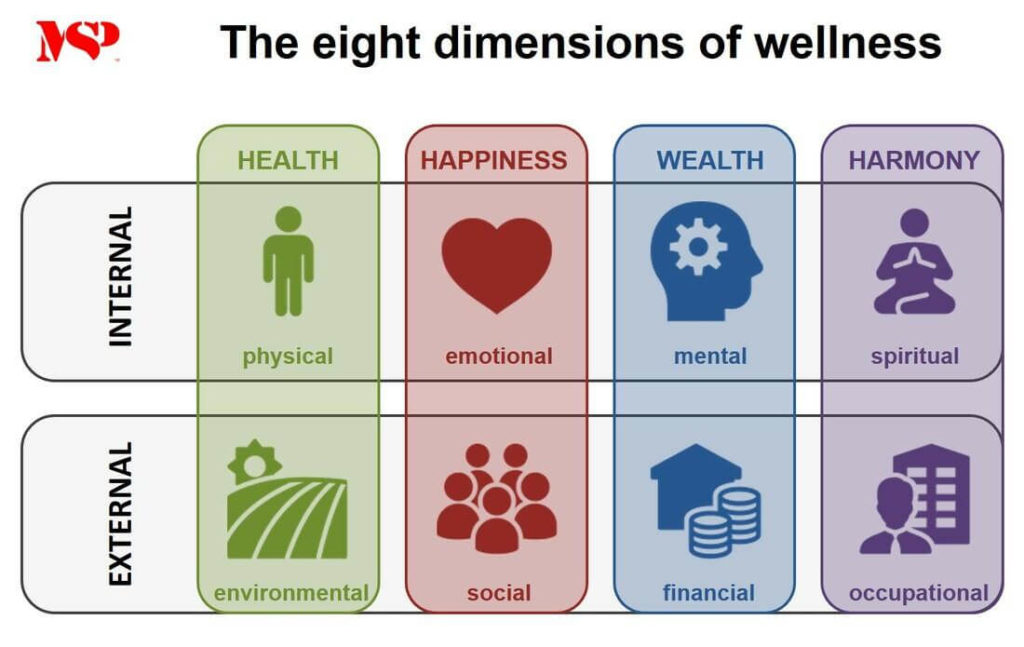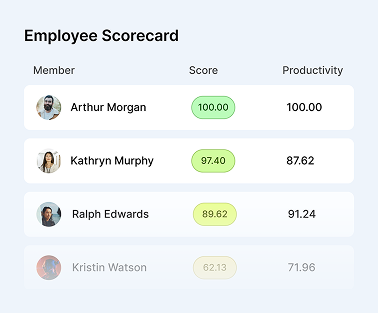How to Ensure Your Business Offers a Healthy Work Environment: Creating a Positive and Safe Workplace

The word healthy, on its Latin root, means “whole“. A healthy workplace then is one where the employees can work together as a whole, being highly productive as a team while maintaining good interpersonal relationships. And you, as their employer, are responsible for creating a healthy and safe work environment for them.
A healthy work environment includes ensuring that the workplace is free of hazards and that employees have the necessary tools and training to do their job safely. It’s also important to create a positive work environment where employees feel valued and supported. A healthy business environment has many benefits, including lower turnover rates, improved productivity, and reduced costs.
This blog post will discuss how to create a healthy work environment for your business. Stay tuned!
Wellness Influencers
The wellness trend is all over the place from Instagram to TikTok bringing wellness influencers to take the market by storm! But, is this only a trend for fashion, or is it a lifestyle people want to embrace? The answer is both. People want to feel good, but they also want to look good!
In fact, according to a survey by McKinsey & Company, a global management consulting firm founded in 1926 that offers professional services to corporations, governments, and other organizations, the worldwide wellness market is estimated to be worth more than $1.5 trillion, with a 5 to 10 percent of annual growth rate!
Below, you can have a peek at how today’s wellness looks for people!

Since businesses — which include both for-profit and not-for-profit companies, institutions, and organizations designed to provide goods and/or services — have come to understand the role that the workplace can play in promoting employee health, wellness has begun to spread to the workplace.
The Advantages of a Healthy Workplace
Creating a healthy workplace is not only good for your employees, but it’s also good for business. A healthy workforce is a productive workforce, and businesses that invest in their employees’ health and wellness are more likely to see a return on their investment through improved employee productivity, retention, and morale.
A healthy workplace can also help to reduce healthcare costs, as employees who are physically and mentally healthy are less likely to need sick days or to make use of their health insurance. According to a Harvard study on the return on investment of employee wellness programs, medical expenditures typically decrease by $3.27 for every dollar spent on employee well-being, and absenteeism decreases by $2.73. The return on investment is 6 to 1!

Saving some money sounds delightful, right? Yet, what implies offering a healthy environment?
Thinking about a healthy workplace, we can easily recall some obvious measures like having fresh fruit in the office or providing gym memberships.
And these are great! However, if you want to create a safe and positive work environment that promotes employee health, there are other things you should keep in mind.
Let’s dive into the topic!
The Umbrella of Wellness
A safe, healthy workplace is not only about organic snacks, but a space that offers more tangible, long-lasting benefits. If you want your workplace to be whole, we invite you to follow the guidelines of the wellness umbrella!
The wellness umbrella is a model that encompasses all aspects of well-being, from physical to mental health, and everything in between
This umbrella can be broken down into several different categories, each of which offers its own set of benefits. When it comes to the workplace, some of the most important categories of wellness to focus on include:
✅ Physical
✅ Emotional
✅ Intellectual
✅ Social
✅ Financial
✅ Occupational, Professional, or Career
✅ Environmental
✅ Spiritual

Each of these categories is important in its way, and businesses should focus on promoting wellness in all areas to create a truly healthy workplace
That being said, some businesses may want to focus on one area more than others, depending on their industry and the needs of their employees. For example, a company that works with hazardous materials might place a greater emphasis on safety, while a company with sedentary employees might focus on promoting physical activity.
The key is to find what works for your business and your employees and to create a wellness plan that meets the specific needs of your company
It’s also important to remember that wellness is not a one-size-fits-all concept — what works for one person may not work for another, and what works in one workplace may not work for another.
Four Pillars of Well-Being: Physical, Emotional, Social & Financial
Now that we’ve covered the basics, let’s take a more in-depth look at each category of wellness and how you can offer a healthy work environment through them!
Physical Wellness: Building a Healthy, Resilient Body
The first category of wellness is physical, which refers to the health of your body. Physical wellness is all about taking care of your body and maintaining a healthy lifestyle! This can be achieved through exercise, proper nutrition, getting enough sleep, and avoiding risky behaviors.
Exercise
Leading a dynamic lifestyle is important for both physical and mental health, as it helps to reduce stress, improve moods, increase energy levels, and promote overall physical fitness. For businesses, this can mean anything from organizing a company-wide fitness challenge to providing employees with access to a gym or exercise classes.
Proper Nutrition
Healthy eating habits are also essential for physical wellness, as it helps to improve energy levels, focus, and overall health. Employees who eat healthy foods are more likely to be productive and have less need for sick days. Businesses can promote proper nutrition by providing healthy food options in the workplace and by offering nutrition education programs.
According to research, increasing the number of fruits and vegetables available at work by 30% and lowering their price by 50% results in a 300% rise in the number of healthy food purchases.

Sleep
A sleep-deprived employee can be costly! A lack of sleep among the U.S. working population is costing the economy up to $411 billion a year, which is 2.28 percent of the country’s GPD. According to a survey by the Centers for Disease Control and Prevention (CDC), one in three people is not getting enough sleep!
This lack of sleep can have serious consequences, including decreased productivity, moodiness, anxiety, and an increased risk of accidents. Sleep deprivation can also lead to chronic health problems, such as obesity and heart disease.

Getting enough sleep is crucial for physical health, as it helps to improve moods, increase energy levels, and promote overall physical fitness. For businesses, this can mean anything from instituting a “no work after hours” policy to providing employees with access to a nap room.
And speaking about naps! Are you aware of this new trend of having nap pods at the office? In fact, the British Columbia Institute of Technology (BCIT) installed new sleep pods in its library for students to take quick naps.
Risky Behaviors
Avoiding risky behaviors is essential for physical wellness. This includes things like smoking, excessive alcohol consumption, and drug use. Smoking alone costs the U.S. economy $300 billion a year in lost productivity and healthcare expenditures
Businesses can promote healthy behavior by implementing policies that prohibit smoking on company property and by offering employees resources to help them quit smoking. You could also organize regular alcohol-free social events, or provide employees with information about the importance of maintaining a healthy lifestyle.
Emotional Wellness: Cultivating Mental Strength & Balance
The second category of wellness is mental, which refers to the health of your mind. Mental wellness is all about taking care of your mental health and promoting a positive outlook on life! This can be achieved through stress management, relaxation, self-care, and positive thinking.
Stress Management
Stress and employee performance are linked as being stressed out can lead to employees feeling overwhelmed, anxious, and burnt out. When this happens, it can impact their ability to focus and be productive.
In fact, stress has been shown to increase error rates and decrease work quality. It can also lead to absenteeism as employees are more likely to either call in sick or come to work but not be as effective. As a result, stress can have a significant impact on an organization’s bottom line.
While there is no one-size-fits-all solution to stress, employers can take steps to mitigate its effects by implementing policies such as flexible working arrangements and allowing their employees to be part of the setting of their work schedule. Below you can see some options for flexible working arrangements!

Positive Thinking
It’s always important to encourage positive thinking in the workplace as it can lead to employees feeling happier and more engaged. This, in turn, can lead to increased productivity and creativity, as well as decreased stress levels.
There are several ways employers can promote positive thinking in the workplace, such as by encouraging employees to set goals, providing them with mentors, and facilitating opportunities for social interaction. Additionally, employers can create a positive work environment by providing employees with recognition and appreciation.
Seeking help when needed is also important for emotional wellness, as it helps to reduce the risk of anxiety, depression, and other mental health disorders.
For businesses, this can mean anything from instituting an Employee Assistance Program to providing employees with access to a mental health professional.
Self-Care
Self-care is all about taking care of yourself emotionally and mentally. It includes things like getting enough sleep, exercise, proper nutrition, and relaxation. Businesses can promote self-care by instituting policies that encourage employees to take breaks during the day, or by providing employees with access to a gym or exercise classes.
Additionally, employers can provide employees with information about the importance of self-care and how to properly take care of themselves. For example, you could offer tips on how to get enough sleep, how to eat a balanced diet, or how to relax and de-stress.
Social Wellness: Fostering Connections & Community
The third category of wellness is social, which refers to the health of your relationships. Social wellness is all about maintaining healthy and supportive relationships with others! This can be achieved through communication, teamwork, and networking.
Communication
Communication is key to maintaining healthy relationships! When communication is effective, it can lead to increased trust, understanding, and respect. Additionally, effective communication can help to resolve conflicts and build stronger relationships.
You can promote effective communication in the workplace by providing employees with training on how to communicate effectively or by encouraging employees to share their thoughts and feelings openly. Offer a safe place!
Additionally, employers can create an environment that promotes open communication by being approachable themselves and encouraging employees to give feedback.

Teamwork
Teamwork is essential for any business, as it helps to create a sense of unity and purpose. When employees work together towards a common goal, it can lead to increased productivity and creativity. This can help to build relationships and trust between employees.
There are several ways businesses can promote teamwork in the workplace, such as by providing employees with training on how to work effectively in teams or by encouraging employees to participate in team-building activities. Additionally, employers can create an environment that promotes teamwork by fostering a spirit of cooperation and collaboration.
Networking
Networking is all about building relationships with others! It can be used to build professional relationships, find mentors or sponsors, and develop new skills. For businesses, networking can lead to increased awareness and exposure.
Businesses can promote networking in the workplace, such as by providing employees with training on how to network effectively or by encouraging employees to attend networking events. Don’t hesitate to host that brings people together!
Financial Wellness: Securing Your Resources & Future
Financial wellness is all about taking care of your finances and maintaining a healthy financial future. This can be achieved through budgeting, saving, investing, and avoiding debt.
Budgeting
Being aware of how much you earn and spend is important for both financial and emotional health, as it helps to reduce the risk of financial stress and anxiety. For businesses, this can mean anything from providing employees with access to a budgeting program to offering financial counseling services.
Saving
Having some side money helps to improve financial security and promote overall financial health. Employees who save money are more likely to be productive and have less need for sick days. Businesses can promote saving by providing employees with access to a savings program, or you can set a compensation plan.

Investing
Employees who invest money are more likely to be productive and have less need for sick days. As well, when employees invest they are more likely to be financially secure in retirement. Businesses can promote investing by providing employees with access to an investment program or offering financial education resources.
Occupational, Professional, or Career
As an employer, you can promote occupational, professional, or career development in the workplace. These include providing employees with access to training and development opportunities, encouraging employees to pursue higher education or certification, and offering career counseling services. Allowing time for advanced planning helps too!
Don’t forget to create an environment that promotes occupational wellness by ensuring that the workplace is clean, comfortable, and free from hazards!
Conclusion: Next Steps for Embedding Wellness into Your Culture
Fostering a healthy workplace isn’t a one‐and‐done task—it requires ongoing commitment, clear policies and active participation at every level. By rolling out the physical, emotional, social and financial initiatives we’ve covered, you’ll build an environment where people feel genuinely supported and empowered.
Start small: pilot one program this quarter, gather feedback, then expand. With consistent effort and open dialogue, you’ll cultivate a thriving, productive culture that stands the test of time.
-The Monitask Team
FAQ: Healthy Work Environment
How can physical wellness programs reduce absenteeism and sick leave?
By offering standing desks, regular wellness challenges or flu-shot clinics, you help employees stay healthy and energized. Studies show that targeted physical-health initiatives can lower sick time and overall absenteeism by up to 25%, keeping projects on track and costs down.



